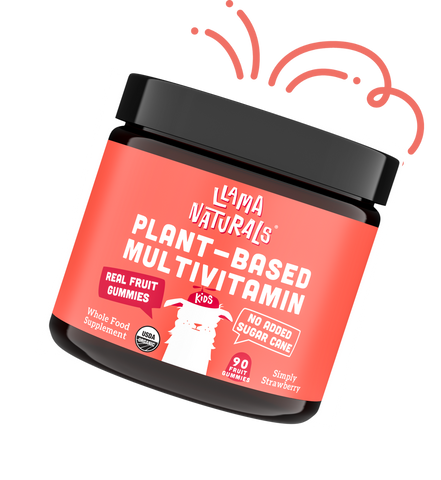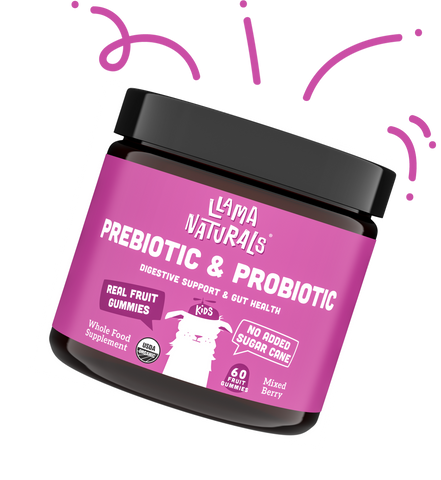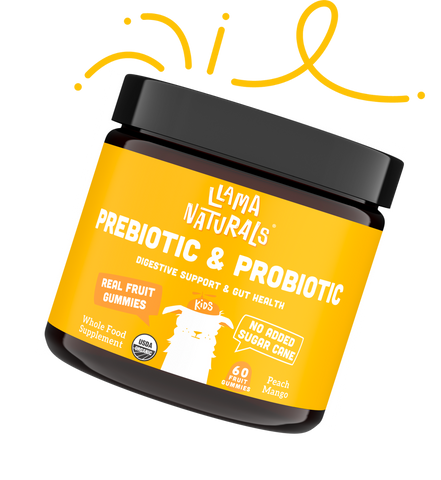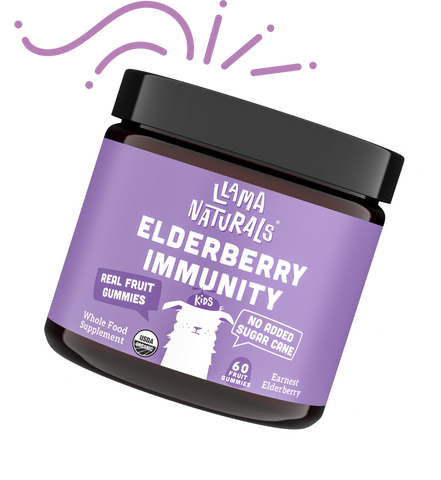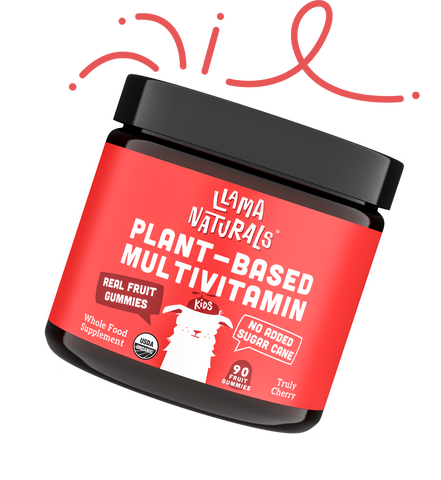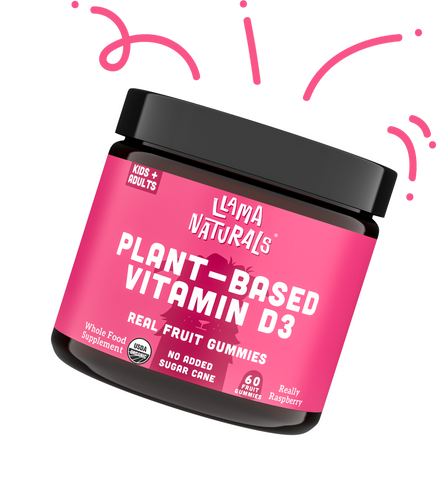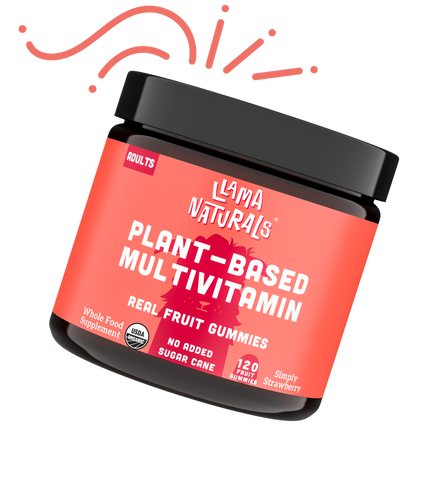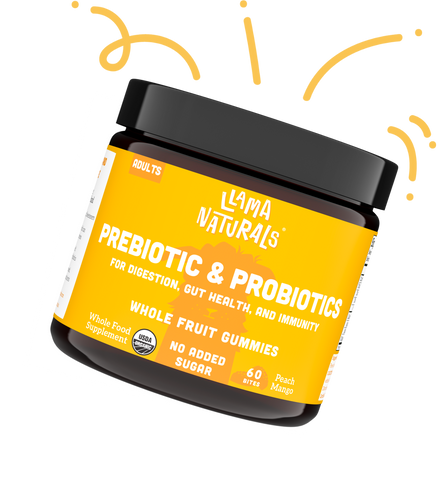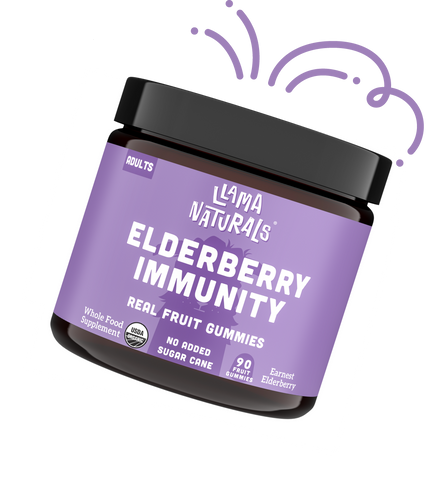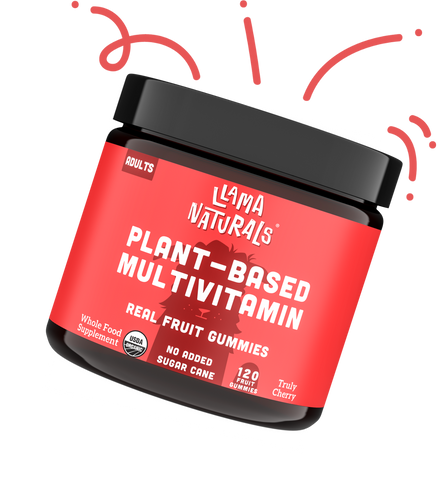Kids' Hair Growth: Healthy Hair for Kids

Did you know that your kid's hair growth begins when they are in the womb? From birth, we are blessed with hair follicles that help us grow healthy hair. How fast — or how much — your child's hair grows depends on various factors, like their genes, diet, environment, stress levels, and so on.
Perhaps you've often lamented about how your Mini Me's mane struggles with dryness, tangles, and split ends. Or maybe your newborn has so little baby hair, you’re worried. To help your little one's hair grow faster, or at least at a normal pace, let's explore what contributes to your kid's hair growth and learn some tips to promote healthier hair.
The Roadmap to Kids’ Hair Growth
The hair growth cycle sets the stage for healthy hair growth. Knowing the different stages your kid’s tresses go through can help prepare you for what their hair needs at different times in life. No matter our hair type, be it naturally curly hair or straight locks, our hair is constantly growing and shedding, thanks to these three phases:
- Growth phase: This phase is scientifically called the anagen phase. Hair follicles create new hair and push the hair shafts through the scalp. At any given point, 85-95% of your hair is in the growth phase, which can take anywhere from 2-6 years.
- Transition phase: This phase is scientifically known as the catagen phase or regression phase and takes place over a few weeks. About 1-5% of your follicles shrivel up a li'l as they move from the growth phase to the resting phase (see next point).
- Resting phase: This phase is scientifically referred to as the telogen phase. It marks a roughly three-month period in which 10-15% of your follicles stop growing hair. This causes the old hair fibers to fall out so that new ones can take their place in the growth phase and start the cycle all over again.
As you can see, hair shedding is part and parcel of life. In fact, many of us shed as much as 100 strands per day, a completely natural phenomenon. If you think that's a lot, just know that our scalp is home to roughly 100,000 hairs. It certainly puts things into perspective!
It's also worthy to note that not all your follicles go through each phase of the hair growth cycle at once. This is why we may resemble Bigfoot at certain times and then seem to start shedding more often at other times (what a rollercoaster!).
Your Kid’s Hair Health Mirrors Their Overall Health

Strong, shiny, smooth hair paints a rosy picture of optimal hair health. But what if your child’s locks are brittle, straw-like, and look lifeless? Or even worse, breaking off and falling out in clumps? It could be a warning sign indicative of their overall health.
For example, some kids may sport graying hair — yes, you read that right — at their age. While a salt-and-pepper hairdo may look good on hubby, it's a cause for concern when it’s on Junior’s head. Genetics could be at play here. More often than not, though, graying hair in kids is due to nutrient imbalance.
Research shows that low levels of copper, iron, calcium, vitamin D3, and vitamin B12 are often reported with prematurely graying hair. On the other side of the coin, excess nutrients, like a vitamin A overdose, have also been associated with hair loss in kids.
Mice models also show that decreasing levels of a specific type of collagen (Type XVII) near the hair follicles lead to age-related hair loss, which may happen in humans, too. While this is more of a concern in adults, collagen deficiency could become potentially problematic in kids, especially as they grow up.
In a similar way, telogen effluvium sparks temporary hair loss in young ones, too. This tends to follow stress or sudden or traumatic events. A larger proportion of hair follicles enters the resting phase after an event such as a high fever, injury, or extreme stress. Thankfully, it usually clears up on its own with your kid's hair growth restarting within a few months to a year.
Besides that, alopecia areata (a form of hair loss) is an autoimmune disorder that affects some children. In this case, the immune system mistakes the hair follicles as foreign substances that need to be destroyed. Children suffering from alopecia areata usually sport random bald spots on their scalps, which may spread to other body parts, such as the eyelashes and eyebrows.
Babies can fall prey to scalp and hair issues, too. To illustrate, a cradle cap often rears its head (pun intended) during the first three months of a newborn's life. Typically referred to as the baby version of dandruff, cradle cap is usually triggered by too much sebum and yeast on the scalp. Fortunately, this scalp issue tends to self-resolve over time.
Because hair health is linked to your kid's overall wellness, it’s always best to keep an eye on their tresses. If you notice something off like increased hair falling out or an actual bald patch on their scalp, speak to your pediatrician right away.
A Healthy Recipe for Kids’ Hair Growth

We all want our kids' hair to grow strong, healthy, and fast. But as much as you envision your daughter's mane growing to Rapunzel-like lengths overnight, that's just not physically possible. For context, one’s hair typically grows about 4-6 inches per year.
That said, there are various ways to support healthy hair growth in children. From haircare techniques and products to a healthy diet and supplements, we show you how it's more than doable.
Tune Into the Right Hair-Washing Frequency
To help your child put their best hair forward, a clean scalp is essential for robust kids' hair growth. Remember, follicles are the primary hair-producing factories that reside on the scalp. Keeping this area free of grime, excess scalp oil, and product residues give the follicles the best chance of doing their job — growing strong, healthy hair.
Aside from the proper hair products (more on that later), this is where the right hair-washing frequency works its magic. Because all hair types are different, how often your kid should wash their hair depends on their needs.
Keep in mind, Americans tend to shampoo too much on average. Remember, balance is everything. Take a look at how often you wash your little one’s hair, and see if you could recalibrate. Sometimes, shampooing less is best.
For example, if your little one has fine locks that veer toward oiliness, try washing their hair every other day. Meanwhile, those with curly and coily hair can probably go a little longer without shampooing to downplay the odds of dry hair.
Pick the Right Hair Products
Knowing which hair products work for your little one's tresses is vital to maximizing kids' hair growth. For starters, a clarifying shampoo can help clear natural and product buildup on your child’s scalp. You may also want to check out hair growth products for kids that match their unique needs. For example, a nourishing shampoo that contains moisturizing ingredients like vitamin E and shea butter is ideal for dry hair types. Meanwhile, a biotin- or keratin-infused formula may help promote thicker-looking hair.
It's also good practice to choose paraben- and sulfate-free formulations, since these two ingredients are particularly drying. Remember, well-moisturized hair means less chances of split ends, tangles, and breakage for optimal hair health and growth.
To help hair stay well-moisturized, always follow up with a conditioner after shampooing. That's because most shampoos strip away the natural oils on the hair fibers, leaving behind a negative charge. In turn, your kid's mane becomes drier, rougher, and frizzier. Applying a conditioner afterward helps neutralize the negative charge to minimize the frizz and promote shine.
If your kid's hair needs an extra dose of hydration or often complains of a dry, itchy scalp, deep condition at least once a week with a hair mask (or any kid-approved deep conditioning treatment) after shampooing. You can also try hair growth oils for kids, like an au-naturel hair mask with coconut oil and olive oil.
If you don’t think DIY is your strong suit, get your deep conditioners and hair oils for kids over the counter. Bonus: These moisturizing products also help minimize the tangles (see next point).
Keep Tangles to a Minimum
As kids get older and their hair gets longer, tangles seem to be unavoidable. Unfortunately, those knots and snarls only lead to more breakage and split ends, preventing healthy hair growth. Cue the hair brushing sessions detangling your kid's mane when the waterworks flow freely.
But hair brushing need not be synonymous with modern-day torture. Prevention is key here. Here's what you can do to play down the tangles (and save yourself the ensuing heartache and tears):
- Keep hair well-conditioned: A rinse-out conditioner will usually suffice. But if your kid's mane is ultra-prone to tangles, try a deep conditioner. Then, follow up with a leave-in conditioner, hair oil, or detangling spray after showering and before brushing.
- Brush more: The more you brush it, the less likely your kid's hair has a chance to resemble the bird's nests in your backyard. Aim for twice-a-day hair brushing, once in the morning and again at night as their pre-bedtime ritual. Use a wide-toothed comb or a paddle brush with soft bristles to avoid yanking out the strands and turning on the waterworks.
- Use loose protective hairstyles: Protect all the hard work you've done with the right hairstyles. For long hair, think loose braids, buns, and ponytails — “loose” being the operative word here. Too much scalp tension works against your goal of enhancing your kid's hair growth.
Once you've got the tangles to a minimum, you can bid the breakage and split ends goodbye and enjoy healthier hair.
Eat a Healthy Diet
A healthy diet is the foundation for promoting kids' hair growth naturally. Because hair is mainly made of the structural protein called keratin, make sure your young 'un gets enough healthy proteins, like beans, nuts, seeds, and lean meats, in their diet.
Also, keep a close watch on their daily nutrient intake, especially those essential to your kid's hair growth. Iron easily tops the list, followed by non-negotiables such as vitamin D, vitamin E, and biotin, of course. Take note that the human body doesn't naturally produce these micronutrients, making a nutritious diet all the more integral for healthy hair growth.
If your kiddo is a picky eater, a dietary supplement like Llama Naturals' multivitamin for kids can help you out. Our supplements are made with 13 natural vitamins from real fruits and veggies (without added sugars). With Llama Naturals, getting your child to take healthy multivitamins no longer has to feel like a chore.
Healthy Hair for Healthy Kids
Being a parent means you have to pay close attention to every part of your kid's health, from head to toe. Sure, kids’ hair grows at a natural pace. At times, though, it may seem like your kid's hair growth is stalling — or even regressing — which could send you into a whirlwind of worry.
But before you panic, learning how the hair growth cycle works can help you put things into perspective. Also, implementing healthy haircare practices, like regular hair-washing and using the right products, can help maximize your kid's hair growth. Of course, what your child eats is fundamental to their hair health, too.
At Llama Naturals, our whole fruit-based supplements package essential vitamins into healthy, delicious gummies to help your loved one meet their nutritional needs with ease. Explore our range of products today.
Llama Naturals is a plant-based nutrition brand that has created the World's First Whole Fruit Gummy Vitamins that are made with no added sugar and whole-food vitamins. They are USDA Organic, Vegan, Gluten-Free, free of common allergens, and are slow-cooked on low heat to retain rich phytonutrients & fruit flavor. It’s a win-win gummy vitamin that you and the family will love.

